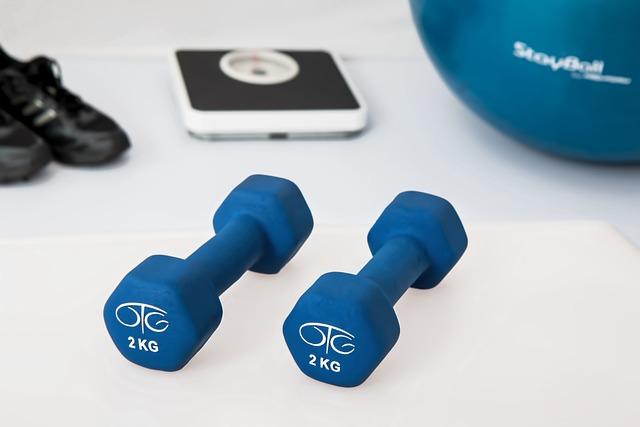In the journey toward achieving a healthier lifestyle, consistency and self-awareness are key. A weight loss journal serves as an indispensable tool for those aiming to stay on track with their goals. By meticulously recording your dietary habits, exercise routines, and emotional triggers, you gain valuable insights into patterns and behaviors that may be hindering your progress. This guide will walk you through the effective use of a weight loss journal, providing you with authoritative strategies to enhance accountability, identify obstacles, and celebrate milestones. Whether you are just starting out or seeking to refine your approach, understanding how to leverage this powerful resource can make all the difference in your weight loss success.
Selecting the Right Journal Format for Your Weight Loss Journey
Choosing the perfect journal format is crucial to effectively documenting and reflecting on your weight loss journey. Begin by considering what will keep you engaged and motivated. Some prefer traditional paper journals for the tactile experience and creative freedom, allowing for doodles and personalized touches. Others might opt for digital journals, which offer convenience and the ability to track progress through apps and online platforms. When selecting your format, consider the following elements:
- Accessibility: Ensure your journal is easy to access and update, whether it’s in your bag or on your phone.
- Customization: Choose a format that allows you to add or remove sections as your needs evolve.
- Visualization Tools: Digital formats often include graphs and charts to help you visualize your progress.
- Privacy: Consider how secure your information is, especially if you’re using an online platform.
Ultimately, the right journal format should align with your personal preferences and lifestyle, making it an integral part of your daily routine.

Setting Realistic Goals and Tracking Progress Effectively
Establishing goals that are both attainable and motivating is crucial in your weight loss journey. Begin by defining specific objectives rather than vague aspirations. For example, instead of setting a goal to “lose weight,” aim for “losing 5 pounds in a month” or “fitting into a specific dress size.” This approach not only gives you a clear target but also makes it easier to measure success. Additionally, break these larger goals into smaller, more manageable milestones. This way, you can celebrate small victories along the way, keeping your motivation high.
Tracking your progress in a structured manner is essential to stay on course. Utilize your weight loss journal to document key metrics such as:
- Daily food intake – Include everything from meals to snacks, noting portion sizes and nutritional information.
- Exercise routines – Record the type, duration, and intensity of your workouts.
- Weight measurements – Track your weight at consistent intervals, ideally weekly, to monitor changes over time.
- Emotional and mental reflections – Jot down how you feel each day, recognizing patterns between your mood and your eating habits.
By systematically logging these details, you not only maintain accountability but also gain valuable insights into what works best for you. This personalized feedback loop is instrumental in refining your strategy and achieving your weight loss goals effectively.

Incorporating Nutritional and Exercise Logs for Comprehensive Monitoring
To achieve effective weight loss, it’s crucial to maintain a detailed record of your nutritional intake and exercise routine. A journal that integrates both of these aspects offers a holistic view of your lifestyle, allowing for adjustments and improvements where necessary. Tracking your meals provides insight into your caloric intake, helping you identify patterns or triggers that might lead to unhealthy eating habits. By noting down everything from breakfast to late-night snacks, you can start recognizing which foods contribute positively to your goals and which ones need moderation.
- Record every meal: Include portion sizes, ingredients, and time of consumption.
- Identify trends: Look for recurring food choices that may be affecting your progress.
On the exercise front, logging your physical activities is equally important. It not only tracks your progress but also helps you maintain consistency. Document the type, duration, and intensity of each workout session. This will assist in identifying what exercises are most effective for your body and help you set realistic goals. Remember, it’s not just about moving; it’s about moving with purpose.
- Detail your workouts: Note the type of exercise, duration, and perceived exertion level.
- Monitor improvements: Track performance gains or setbacks to adjust your routine accordingly.

Leveraging Reflective Entries to Enhance Motivation and Accountability
Reflective entries in your weight loss journal can serve as powerful tools to boost both motivation and accountability. By regularly documenting your thoughts, challenges, and achievements, you create a personal narrative that not only tracks progress but also highlights patterns and behaviors that may need adjustment. Consider dedicating a section of your journal to reflective questions such as:
- What did I learn about myself today?
- How did I handle cravings or setbacks?
- What am I proud of this week?
- How can I improve my routine tomorrow?
Engaging with these questions helps to reinforce your commitment by making you consciously aware of your journey. It also acts as a personal check-in, keeping your goals at the forefront of your mind. Furthermore, the practice of self-reflection can be a motivational anchor, reminding you of your ‘why’ and allowing you to celebrate small victories along the way.
